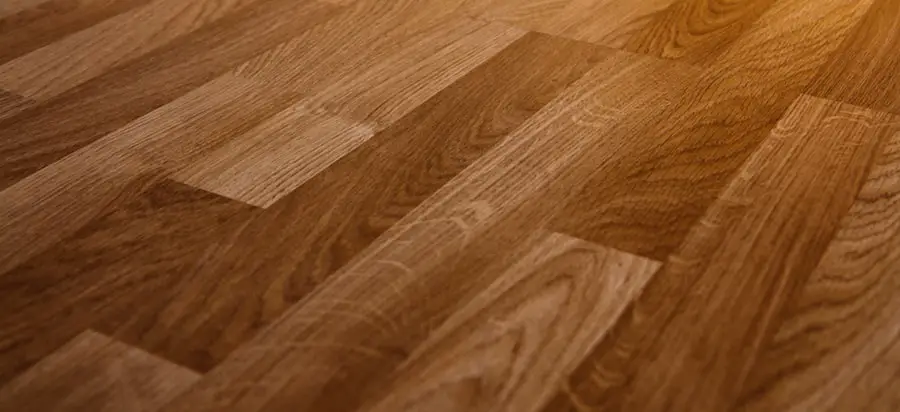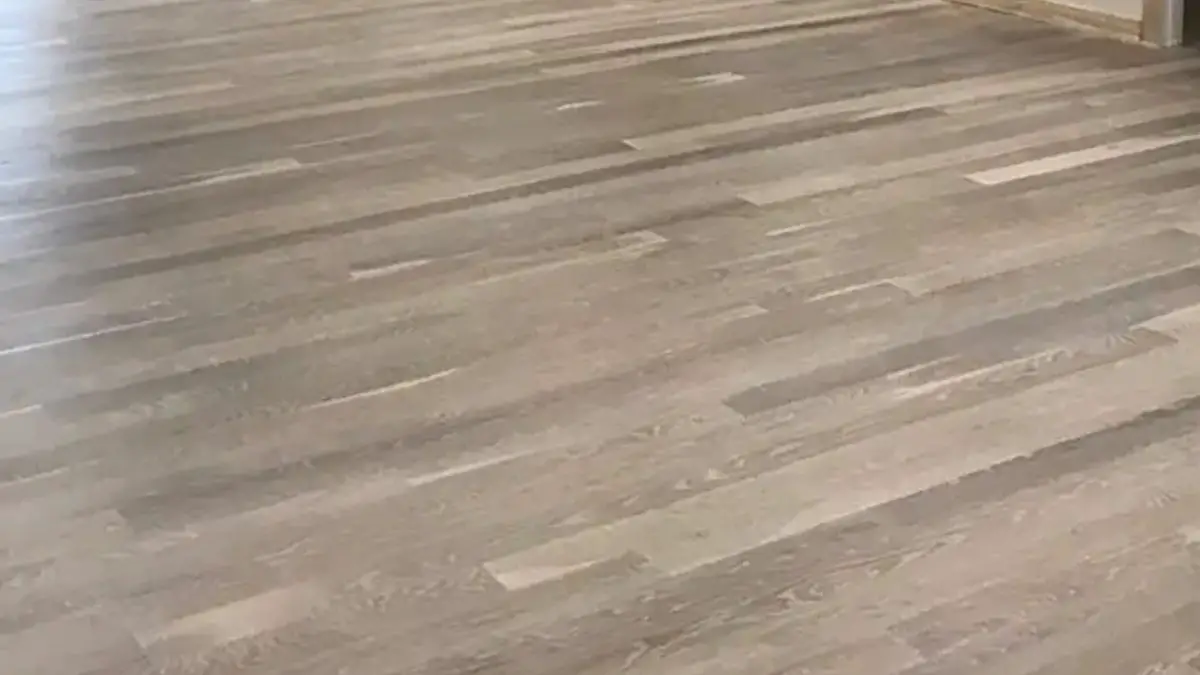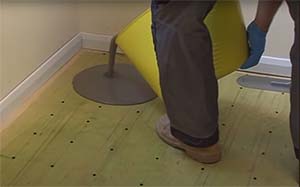
When I first considered installing a floating floor in my own house, I was worried if they will be too noisy and disturb my peace. So, I did my research, which I will be sharing with you in this article.
Floating floors, when installed correctly, won’t produce much noise. Noisy floating laminate flooring has more to do with padding quality and installation. Depending on the temperature, humidity, type, and quality of the floating floor material used, poor installation (uneven subfloor, improper expansion gaps, etc.) can produce squeaking and popping noises from your floating floors.
Noise in a floating floor can set in either immediately after the installation or months or years after the installation depending upon multiple factors briefly discussed in this article. Following this article till the end, you will become aware of why floating floors make such crackling noise and what you can do about it.
Causes of Noise in Floating Floors & Solutions
Although floating floors are not meant to be noisy, the problem is sadly quite common for many of those who choose floating floors as their flooring option.
Highlighted and briefly explained below are some of the factors that might contribute to various kinds of noises on floating floors, along with reasonable suggestions on how to resolve it.
Problems Related to Faulty Installation
One of the factors that greatly influence the probability of floating floors to make noise is inadequate floor preparation. The three main culprits can be:
- Uneven Subfloor
- Improper expansion gaps
- Low quality of underlayment used
Let’s dive deep and understand each of these factors more clearly.
Uneven Subfloor
This is one of the most common reasons for popping noises on floating floors. The subfloor was not flat enough before the installation and didn’t match the flat tolerance depending upon the subfloor type.
- For the concrete subfloor, manufacturers will specify a flatness tolerance of around 1/8″ in a 6-foot radius and 3/16″ in a 10-foot radius. However, it may differ from manufacturer to manufacturer.
- The wooden subfloor should be flat to within 3/16″ in 10 feet or 1/8″ in 6 feet radius. Again, it will be variable depending upon the manufacturer’s specifications.
When the subfloor is not even, it will allow the floating floor planks to move up and down in an awkward movement when some are walking over them or any other pressure source. This will cause wear and tear in the attached tongue and grooves, often the cause of crackling and popping noises.
If not handled in time, this may damage the whole flooring, and then removing the damaged flooring and reinstalling a new one will be the only option available.
Solutions for Uneven Subfloors
Whether the cause of the problem is an uneven subfloor or an extremely dirty subfloor, there aren’t always many options for you to consider for the repair of the floor.
You might have to pull everything out, start the installation again while ensuring that the subfloor preparation is done correctly and the subfloor is smooth, even, and free of all kinds of dirt and debris.
Improper Expansion Gaps
The laminate flooring planks are subject to expansion and contraction depending upon temperature and humidity. The plank expands with rising temperature and humidity and contracts with a decrease in both.
Suppose floating floor planks are laid too close to any endings such as walls, door jambs, etc., without any proper expansion gaps. A lack of expansion gaps leaves no space for the movement of expansion and contraction of a floating floor. The only direction they can move is up and down against the wall or any other endings.
This is what causes the squeaking noise on floating floors. A standard expansion gap while installing floating floors is about 1/2″. However, It may vary from one manufacturer to another depending upon the material used and other factors such as humidity and temperature at the installation site.
Solutions for Improper Expansion Gaps
- Use a hand saw, or floorboard saw to trim the planks which go towards the endings of the floor to ensure that proper expansion gaps (as specified by manufacturers) are met.
- Use accurate spacers to ensure proper measurement of the expansion gap.
Low Quality Underlayment
It would help if you kept in mind that you will always have a certain quantity of constant movement with a floating floor since it is installed over a padding layer. While you walk, the pad compresses, and the floor tends to move if the low quality of underlayment is used.
Such ineffective underlayment does very little to make the flooring quieter, resulting in a more noisy floating floor.
Solution for underlayment
You can alleviate the issue quickly by using a better quality foam underlayment(around 1/4″). The thicker the underlayment, the better. Using an underlayment made from a denser foam helps get rid of noises and makes the floor softer to walk on.
Type and Quality of Floating floors.
Over the last few years, glueless floating floors have taken over the market, which has pushed many producers to rush into key decisions that affect the quality of their products to keep their position and value in the market.
The result of this is the production of many glueless flooring, which will make noise regardless of the style of installation, effort, or arrangement.
There are several different options while considering which floating floor type will best suit you. If your primary concern is noise, engineered wood is a better option than laminate flooring, but it depends on the brand and quality.
Our recommended brand for each type of flooring:
- Laminate flooring – Pergo, Tarkett.
- Luxury vinyl flooring – Shaw, COREtec, Mohawk
- Engineered hardwood – Bruce, Carlisle, Lumber Liquidators
Solutions
- Carry out proper research about the product you are about to purchase
- The production entities that produce these kinds of products should be challenged and sanctioned by government-backed regulation bodies.
Issues Related To Glueless Interlocking
The popular opinion nowadays is that almost all the flooring floors in use are the glueless kinds. Some of these are relatively easy to install, and they usually cause no issues, while others may prove to be more challenging.
The cause of the noise in a number of these merchandises is that even though the manufacturing tolerances of these locks the board together, there’s some movement between boards, so these products tend to squeak and make noise being walked upon.
These kinds of floorboards can be a brilliant value for the money and are less complicated to install. They tend to be noisier than a glued or nailed-down hardwood floor.
Solutions for Glueless Interlocking Issues
- Pull it up and glue it down, or pull it up and do it in an edge-glued manner. This can usually resolve the problem; however, it can affect the guarantee. So please check the manufacturer’s instruction manual before proceeding further.
- If the problem is limited to a small area, a traditional repair method is to try sprinkling a talcum baby powder touch between the boards. Then tap the floor gently with a rubber mallet to avoid damaging the floor. This could create vibrations, and the powder will migrate down between the boards. The powder will act as a lubricant and may resolve the problem.
Problems Related to Moisture and Temperature
Edge-glued floating flooring is usually engineered floors assembled with a bead of glue between the tongue and groove across the area of each board to keep it in place.
After some time, the entire floor fuses to become one piece. There is a chance that that problem might be related to moisture and temperature.
The ideal temperature for a place where the floating floor is to be installed is in the range of 60- 80 F. The relative humidity of 35% to 50%, which again varies from one manufacturer to another.
Suppose the ground expands to its limits past the expansion gap left during the installation period because of excessive moisture and temperature. In that case, this might result in your glued-edge floating floor making noise.
At this point, the ground is locked in, hitting the walls or door jambs around the perimeter. You may note that the floor appears to feel softer or bouncier in comparison to when it was freshly installed. That is because the floor is still looking to expand and now has no area to go but up.
What you’re listening to is the bond between the glued boards breaking as you walk on the floor. If no solution is found, the floor may begin to show separation and gaps between the boards. If that occurs, there might not be room for any repair, and finding a substitute may be required.
Solution for Moisture and Temperature Related Issues
- Use an AC for dehumidification during the summertime to remove moisture. Use humidification during the winter to add moisture to drier air.
- Maintain sustainable temperature for your flooring using AC or any other appropriate methodology
- Before a great deal of damage is done to the floor, try to make repairs. Try to remove the baseboards and moldings to know where the ground is hitting the partitions or moldings and is locked in.
- You might need a toe-kick saw to make space in the ground to allow for the required level of expansion. As soon as you have made the cuts, the floor should drop back to the floor level almost immediately, and the noise should stop.
Now you have gone through this article and can adequately and effectively eliminate the annoying sound in your installation of a floating floor.







